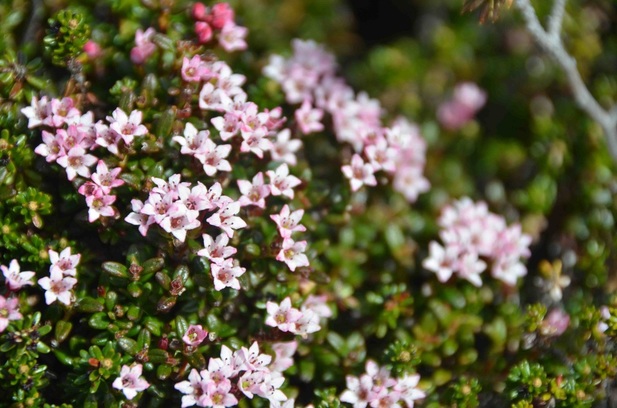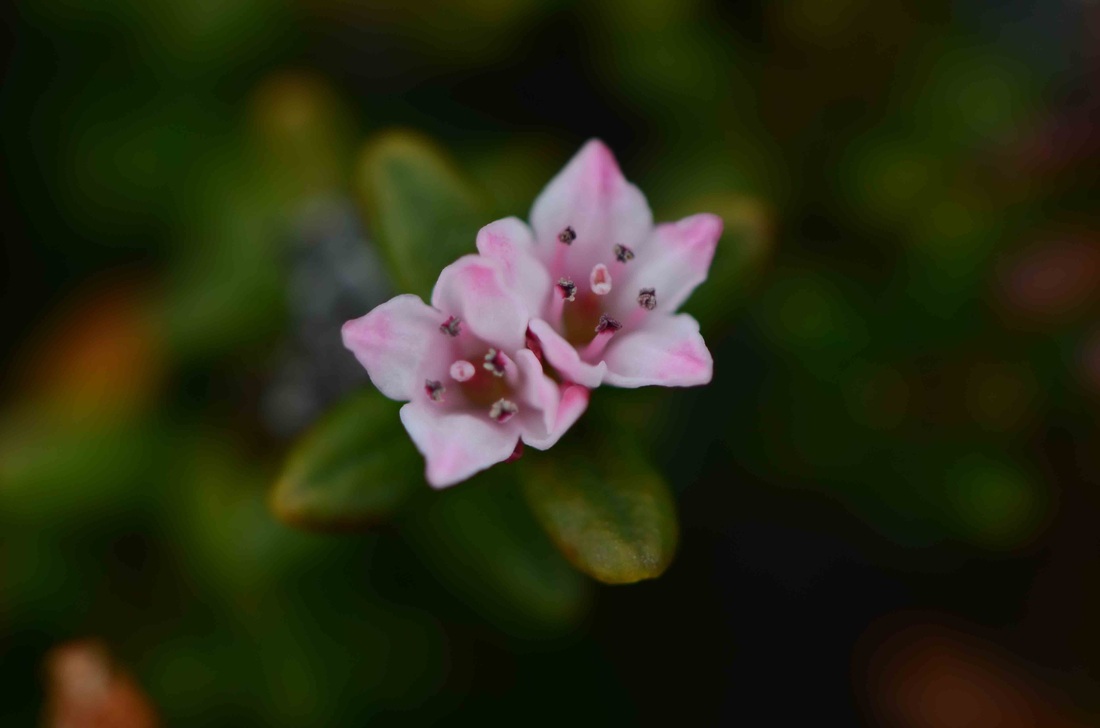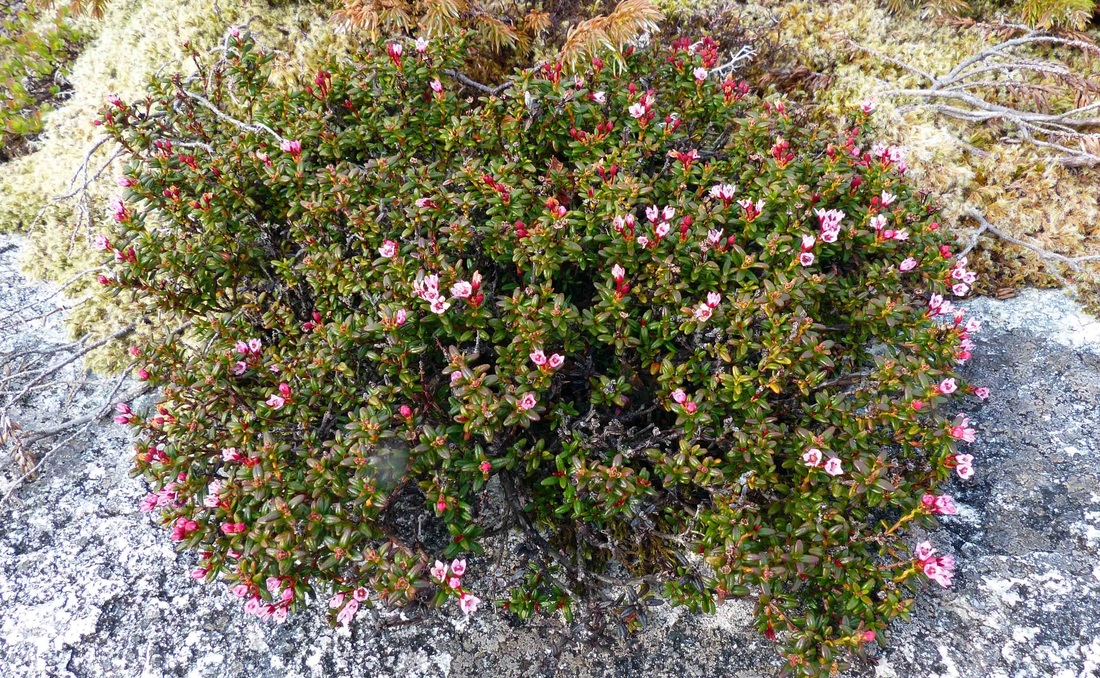Alpine-azalea, creeping azalea • Loiseleuria procumbens
{Loiseleuria = for French botanist J. L. A. Loiseleur-Deslongchamps; procumbens = trailing}
Photos by Brian Starzomski (bottom right) and Andrew Trant.
Identification
Alpine-azalea is a low, matted and many-branching shrub with small pink flowers and leathery, evergreen leaves. Though the branches may be up to 30 cm long, it is generally only 2-10 cm tall. The pink flowers are small (to 5 mm across), bell-shaped, and open upwards. The leaves are also small (to 8 mm long), grow in opposite pairs, and are oblong to pointed in shape, with rolled over margins and whitish, hairy undersides. The plant produces tiny (3-5 mm long) dark red fruits.
Habitat & Range
Near the coast alpine-azalea is restricted to boggy sites, whereas at high elevations and latitudes it grows in dry heath and tundra environments above the tree line. It is a northern species, found across Canada with the exception of Ontario, and in Washington and some northeastern states. It is found across northern Eurasia as well.
Similar Species
When not in flower, alpine-azalea could be confused with crowberry (Empetrum nigrum) as well as Alaskan, yellow, and pink mountain-heather. The leaves of these species tend to be more needle-like; they also grow more densely on branches and in whorls (crowberry) or in an alternate fashion. The leaves of alpine-azalea tend to be larger, appear more sparsely on branches, and grow in opposite pairs.
Human Uses
This delicate shrub is often used in rock gardens and is easy to grow.
iNaturalist
https://www.inaturalist.org/taxa/204337-Kalmia-procumbens
Alpine-azalea is a low, matted and many-branching shrub with small pink flowers and leathery, evergreen leaves. Though the branches may be up to 30 cm long, it is generally only 2-10 cm tall. The pink flowers are small (to 5 mm across), bell-shaped, and open upwards. The leaves are also small (to 8 mm long), grow in opposite pairs, and are oblong to pointed in shape, with rolled over margins and whitish, hairy undersides. The plant produces tiny (3-5 mm long) dark red fruits.
Habitat & Range
Near the coast alpine-azalea is restricted to boggy sites, whereas at high elevations and latitudes it grows in dry heath and tundra environments above the tree line. It is a northern species, found across Canada with the exception of Ontario, and in Washington and some northeastern states. It is found across northern Eurasia as well.
Similar Species
When not in flower, alpine-azalea could be confused with crowberry (Empetrum nigrum) as well as Alaskan, yellow, and pink mountain-heather. The leaves of these species tend to be more needle-like; they also grow more densely on branches and in whorls (crowberry) or in an alternate fashion. The leaves of alpine-azalea tend to be larger, appear more sparsely on branches, and grow in opposite pairs.
Human Uses
This delicate shrub is often used in rock gardens and is easy to grow.
iNaturalist
https://www.inaturalist.org/taxa/204337-Kalmia-procumbens
References
Loiseleuria procumbens (L.) Desv. alpine azalea; alpine-azalea. In Klinkenberg, Brian. (Ed.). E-Flora BC: Electronic Atlas of the Plants of British Columbia. Lab for Advanced Spatial Analysis, Department of Geography, University of British Columbia, Vancouver. Accessed on 14/04/2013.
Pojar, J. and MacKinnon, A. (2005). Plants of Coastal British Columbia, Revised. Vancouver, BC: Lone Pine Publishing. P. 64
Authors and editors of page
Chanda Brietzke and Brian Starzomski (2013).
Loiseleuria procumbens (L.) Desv. alpine azalea; alpine-azalea. In Klinkenberg, Brian. (Ed.). E-Flora BC: Electronic Atlas of the Plants of British Columbia. Lab for Advanced Spatial Analysis, Department of Geography, University of British Columbia, Vancouver. Accessed on 14/04/2013.
Pojar, J. and MacKinnon, A. (2005). Plants of Coastal British Columbia, Revised. Vancouver, BC: Lone Pine Publishing. P. 64
Authors and editors of page
Chanda Brietzke and Brian Starzomski (2013).







